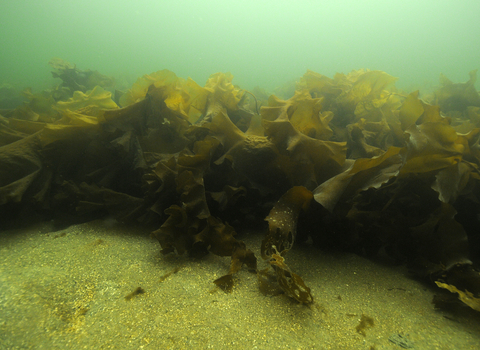
Sugar kelp ©Keith Hiscock
Sugar kelp
Sugar kelp is the crinkly belt like kelp that can often be found in deep rockpools on the lower shore or washed up on the beach after rough seas.
Enw gwyddonol
Saccharina latissimaPryd i'w gweld
January to DecemberGwybodaeth am rywogaethau
Categori
Ystadegau
Length: up to 5m Frond width: over 15cmCommon
